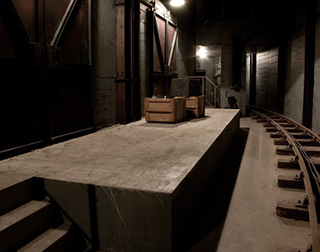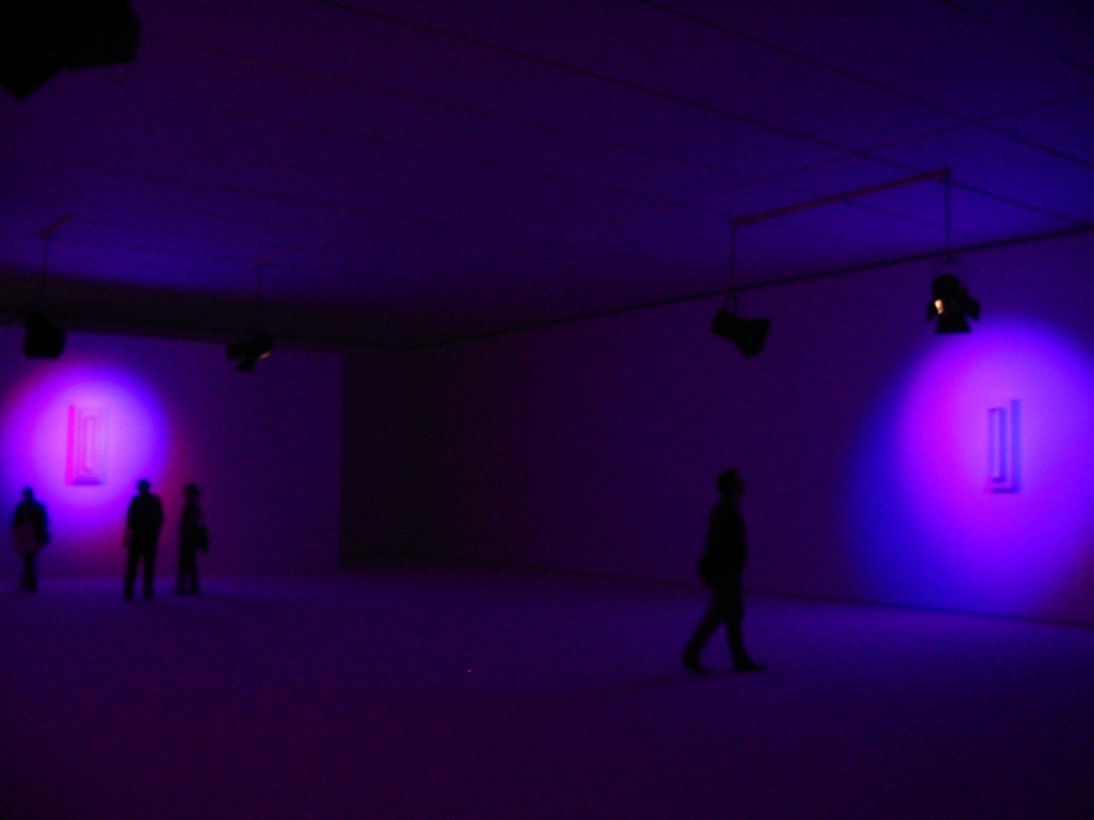Kako se osjeća Ništavilo kad se ujutro probudi iz ružnog sna.
soundcloud.com/alessandrocortini
Alessandro Cortini is best known as the lead electronics performer in Nine Inch Nails’ live unit.
His recordings under his own name have gained prominence in recent years and he has become known as one of the pre-eminent Buchla masters in North America. Cortini makes a surprising departure into the 202 on his debut album for Hospital Productions - ‘Sonno’.
‘Sonno’ was recorded in hotel rooms, using a Roland MC 202 through a delay pedal, recorded direct, sometimes into a small portable speaker system.
“I liked to walk around the room with a handheld recorder to hear where the sequence would sound better, turn on faucets, open doors or windows to see how the ambient sounds would interact with the MC 202/delay/speaker sound. It was very relaxing and liberating to make music this way...”
The result is a beautifully restrained yet oddly emotive album that’s quite distinct from the overly academic approach so often undertaken by hardware driven devotees.
Nine Inch Nails’ keyboard fiddler Alessando Cortini arrives on Dominick Fernow’s Hospital Productions imprint with new album Sonno.
The album is quite a departure for Cortini – while he’s best known for his skill with the complex (and massive) Buchla modular synthesizer, Sonno finds the producer stripping down his setup to the bare minimum: a Roland MC-202 and a delay pedal.
The MC-202, for those that might not remember, was for all intents and purposes a repackaged SH-101 with a more robust sequencer. The synth was considered at the time to be a more deluxe version of the TB-303, but where the 303 excelled in its simplicity, the 202 was incredibly fiddly to patch, and while it had the potential to make some impressive sounds, it has never achieved the widespread notoriety of its smaller, simpler little brother.
It’s an interesting choice for Cortini then, but he manages to work well with the box’s limitations, and apparently used it as a companion in hotel rooms around the world while he was touring with Nine Inch Nails. This gives the selection of tracks a fuzzy, late night haze, something you can hear clearly on the doomy ‘Dell’influenza’ which you can hear in full below. - www.factmag.com/2014/06/13/hear-alessando-cortinis-eerie-dellinfluenza-from-new-hospital-album-sonno/
Hospital Productions debut from Nine Inch Nails’ Alessandro Cortini, a suite of 9 analogue synth pieces complete with found and ambient sounds* Alessandro Cortini is best known as the lead electronics performer in Nine Inch Nails’, but in recent years his work as ‘Sonoio' and a pair of fine albums for Important Records under his own name have highlighted his own individual productions. Known as one of the pre-eminent Buchla masters in North America, Cortini makes a surprising departure on this debut album for Hospital Productions by making use of little more than a Roland MC 202 fed through a delay pedal and ambient sound recordings taken in various hotel rooms recorded direct, sometimes into a small portable speaker system. “I liked to walk around the room with a handheld recorder to hear where the sequence would sound better, turn on faucets, open doors or windows to see how the ambient sounds would interact with the MC 202/delay/speaker sound…” The result is a beautiful, evocative, highly unusual suite of tracks, quite removed from the Modular/Kosmische revivalism that’s been so preeminent over the last half decade. ‘Sonno' is soaked in atmosphere, those background recordings imbuing proceedings with a fizzing resonance that’s impossible to recreate artificially, making for essential listening for anyone who can’t get enough of classic material from ENO or AFX and bored with cheap imitations. Highly Recommended. - boomkat
A sense of place is becoming increasingly important in these disassociated times, as is lovingly illustrated in Boomkat‘s exceptional 14tracks compilation Psychoacoustic Cartography. These seems to be true of every style and genre, but is triply compounded in the realm of electronic music, which all-too-often never emerges from the claustrophobic confines of motherboards and processors. Electronic musicians seem to be drawing a line in the sand, falling into one of two camps. On one hand, you’ve got the hyper clean and precise alien grime eskibeat sculptures favored by James Ferraro and lashed together into spastic contraptions, via juke and footwork. And on the other hand, you’ve got, what i rather lamentably label “industrial techno“, (there has got to be a better name. Any takers? Industrial techno makes me think of, and often leads me, mid ’90s hardcore/gabber, which is similar, but not the same), with musicians channeling dancefloor miasma from antiquated gear, packed in styrofoam and white noise. Post-industrial techno is more like it, as it definitely often sounds like music made for decrepit warehouses on shitty, broken equipment in a bunker,somewhere between Wim Wenders‘ Berlin in Wings Of Desire, and The Zone, in Tarkovsky‘s Stalker.
 Sonno entirely corrects this uncanny dislocation, as a symphony of tones, pulsing drones, fathomless bass, and coruscating echoes were entirely recorded in hotel rooms, with Corsini walking around the room like a water witch with a field recorder, picking up the sine waves, as they weave, dive, and dodge, creating unique, interesting, and lush phasing that is damn near impossible to replicate digitally.
Sonno entirely corrects this uncanny dislocation, as a symphony of tones, pulsing drones, fathomless bass, and coruscating echoes were entirely recorded in hotel rooms, with Corsini walking around the room like a water witch with a field recorder, picking up the sine waves, as they weave, dive, and dodge, creating unique, interesting, and lush phasing that is damn near impossible to replicate digitally.Alessandro Cortini is best known as the live electronics performer in Nine Inch Nails. It shows, as many moments on Sonno bring to mind NIN’s Ghosts I – IV, so for those who have worn out those records’ 8 sides shall rejoice, with a new sound installation to lose yrself in for days, weeks, and months at a time, transforming yr house or office into a version of La Monte Young‘s dream house.

Cortini is also known as a master of the Buchla synth (did you even know there WAS such a thing), although in this case, Sonno was conceived with a much more rudimentary setup, Roland MC 202 through a delay pedal, recorded direct, sometimes into a small portable speaker system. Yes, that’s right, he even used speakers as microphones, further contributing to Sonno‘s distant, ruined fidelity, something like the sound of a dying star, its light reaching us 230 years after its demise. Or like macroscopic photography of tearing lace.

Even though Roland is best known for their beatmaking apparati, Sonno is a beatless affair, as in “devoid of percussion”, as Marc Weidenbaum recently noted in his 33 1/3 Book on Aphex Twin’s Selected Ambient Works Volume II, every sound has a beat, as they are comprised of sine waves, which rise and fall. This is an apt connection, as Sonno is definitely in the same spirit as SAW II, as well as ambient classics like Music For Airports or Discreet Music by Eno, and is easily as good as any of them, and i don’t say that lightly.
Sonno works as a whole, although each individual track is beautiful and stands up on its own. Some highlights are album opener “Ravina”, with its warm swells of organ-like bass drone, or the lonesome haunted drift of “Voltaggio Solitario” that sounds like Leyland Kirby smearing “1/1″. “Di Passagio”, posted above, is the undisputed champion for this gentle scribe, however, with an intimation of a bassline that makes me think of underwater minimalist techno, watching a meteor shower from the Dead Sea.
There is not a bad moment or bunk note on Sonno; i’ve been hypnotized and mesmerized from hearing the opening strains a week ago, and have become irrevocably obsessed. Cortini has had two successful albums recently on Important Records, Forse 1
This is a modern ambient classic, one of the best i’ve heard in a minute, further situation Hospital Productions at the peak of the interesting electronic music pyramid. At this point, you might as well buy anything by them that you can get yr hands on, as its bound to be interesting.
I cannot recommend this album highly enough. - forestpunk.wordpress.com/2014/07/16/the-poetics-of-space-alessandro-cortini-sonno-hospital-productions/
It’s extremely difficult to articulate exactly what it is about the music that resonates with a listener at the deepest level. This is why providing a review of Sonno proved to be such a challenge for this writer. Before moving onto that task, a brief background about the album. It’s the work of Alessandro Cortini, one of the key members of Nine Inch Nails, and was recorded on a Roland MC 202 in hotel rooms, presumably when he was touring. According to the label, Cortini experimented with the sound of everyday items like taps, windows and doors, as part of the process. This was Cortini claims, a “very relaxing” way to make music.
That’s the practical part out of the way – so what does it sound like? In essence, Cortini has created a remarkable, brooding work out of nothing. There is a sinister, but powerful undercurrent throughout, but despite this, it is surprisingly easy to empathise with his sound scapes and textures. As a former sleep walker, and now an extremely deep sleeper and early riser, Sonno reminds this reviewer of what the first few minutes of being awake feel like. It captures that trance-like state when bleary eyes adjust themselves to the light and the real world, the vestiges of dreams having slipped away.
In places, like the brutal surge of noise and laughing voices as “Rinascimento” fades out or on the churning reverb of ‘Dell’influenza”, it is home to disturbing twists. Elsewhere though, like on the hypnotic drones that comprise “Rovine” or the warbling pulses of “Volaggio Solitario” – which bears a passing resemblance to early 90s ambience – Cortini replicates the sense of blissed out calm that comes after a long state of unconsciousness.Best of all though is “Passatempo”, where soothing waves of white noise act as a backdrop to gnarly but beautiful electronics that rise like the sun through the grey half-light. Simply put, Sonno connected with this writer on a deeply personal level and hopefully it’ll have the same effect on everyone else who hears it. - Richard Brophy
Nema komentara:
Objavi komentar